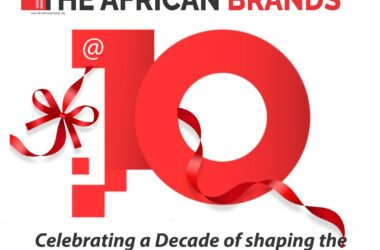All over the world, brands are restretagising on how to deepen their market share and also remain relevance post COVID-19. In just a matter of months, the COVID-19 pandemic has had an unprecedented and lasting impact on every aspect of Consumers lives. The way they work, the the way they were socialise have all changed beyond recognition. The need for people to stay at home, socially distance and follow government advice has driven several key changes in consumer behaviour that are likely to stay post-pandemic.
Content consumption patterns are changing, one of these changes is around how individuals consume content. Whilst the traditional entertainment industry has struggled to survive the pandemic, subscription-based streaming services, such as Netflix, Amazon Prime and Disney+, have seen a significant uptick. In fact, a recent Ofcom report discovered that consumers in the UK spent an average of six hours and 25 minutes a day watching TV during lockdown, with 12 million people deciding to join a service they hadn’t used previously.
This boost was also reflected in the digital news and media sector, driven by increased consumer interest in news updates and a desire for information during this time of uncertainty. In fact, the COVID-19 Subscription Impact Report from Zuora discovered that over the top (OTT) streaming subscriptions grew by 400% from March to May 2020 when compared with the previous 12 months.
Checks by CONSUMERS ASSEMBLY shows that consumers expect more mindfulness from brands post COVID-19 by addressing the larger issue than being opportunistic. They expect brands to communicate around the company’s purpose and values. This trend is expected to prevail post the pandemic too.
Speaking on this issue, a brands management consultant, Gbenga Alomoja told CONSUMERS ASSEMBLY that,
“one would expect that instead of resorting to product push strategies, large established brands will gravitate to empathetic communication to connect with consumers on a deeper level. On the contrary, smaller brands and new age startups will focus on bottom of the funnel content to push for direct results.”
According to him, “in parallel, one would guess that brands will adopt a ‘cautiously optimistic approach’ that will shape their growth. For example, to reinforce normalcy, brands will introduce a wave of ‘pick up where you left off’ campaigns. It will almost be along the lines of forget the past and forge a new future. Many will take inspiration from how mankind overcame setbacks such as the Ebola epidemic of 2014 and economic recession of 2016 to reassure consumers that the human race is mentally equipped to emerge at the top of any challenges they face, including COVID-19, while reinstating positivity.”
“brands and governments across the globe will come together to build and reinforce economies that need mollycoddling. One of the big bets would be brands ushering in an age of partnerships much like global pharma companies that are working together to find a vaccine. Going solo would make it difficult for smaller brands and the smart ones will reinvent/tweak their business models in the immediate future. Eg- Foodtech companies delivering groceries during these times or SMBs taking to digital payments to grow their base.” He noted
He pointed out that, in 2018, it was predicted that by the end of 2020, a good number of Consumers of in developing countries would have at least four online-only media subscriptions. Since then, the subscription economy has thrived and are well on track to hitting that figure.
Continuing, he disclosed that, the COVID-19 crisis accelerated this growth even further. With restaurants, pubs, theatres and shopping centres temporarily closing their doors, consumers found themselves with a lot more time to spare. The need to stay at home and limit the spread of the virus meant that, for many individuals, online outlets became their number one service providers.”
For him, “maintaining customer relationships through subscriptions
For digital media businesses which have adopted a subscription-based model, the next challenge will be pivoting from subscriber acquisition to subscriber retention. With a subscription business model, companies have more levers at their disposal and should be leveraging rich customer data to curate creative pricing and positioning strategies – like bundling – to entice customers with tailored content offerings. This is particularly important as companies begin to adopt large recurring revenue streams and rely less on advertising revenue.”
Also speaking, a Marketing analyst, John Abogonye who also work Ajino Moto said; “moving forward, brands also need to focus on ensuring both flexibility and convenience. These are the areas that are likely to set your business apart and encourage brand loyalty.
According to him, “today’s consumer wants to be put in the driving seat – the ability to easily opt out or even just suspend a service is important and those that offer it typically grow faster than their peers, according to research from the Subscribed Institute. Consumers also want a service that takes the pain out of traditional viewing and purchasing. This means no paywalls or recurring ads, just total accessibility.”
For him, “customisation is crucial as it enables a brand to stand out from its competitors. Consumers have higher expectations on subscription model than they do for a single purchase. Taking unique preferences into account is likely to enable businesses to build a better relationship with their customers, encouraging a longer commitment and reducing churn. Once these models are adopted, focusing on adding value and improving the overall experience for customers will prove critical for building and retaining loyalty for the long term.”
“due to their resilience, ability to rapidly scale and the recurring nature of revenue, subscription-based business models are becoming increasingly popular with digital media businesses. If businesses are able to capitalise on these models now, using them to deliver the right blend of flexibility, convenience and customisation, subscriptions could become the key to surviving the current climate whilst preparing for the future landscape.” He added
While reacting to question on how qualitycampaigns will help brands to grow post COVID-19, hestated that, “campaigns that would have otherwise been green-lighted to showcase offbeat themes and being ‘off the beaten path’, will take a pause. Human psychology suggests that people love normalcy, status quo in practice but eulogize moments of victory against all odds. All things that seemed mundane and boring are the ones that we want back in our lives. The daily run to office, managing those meetings and talking to people in person is what we yearn for. Much like the Homosapien evolution, brands will need to evolve too.”









